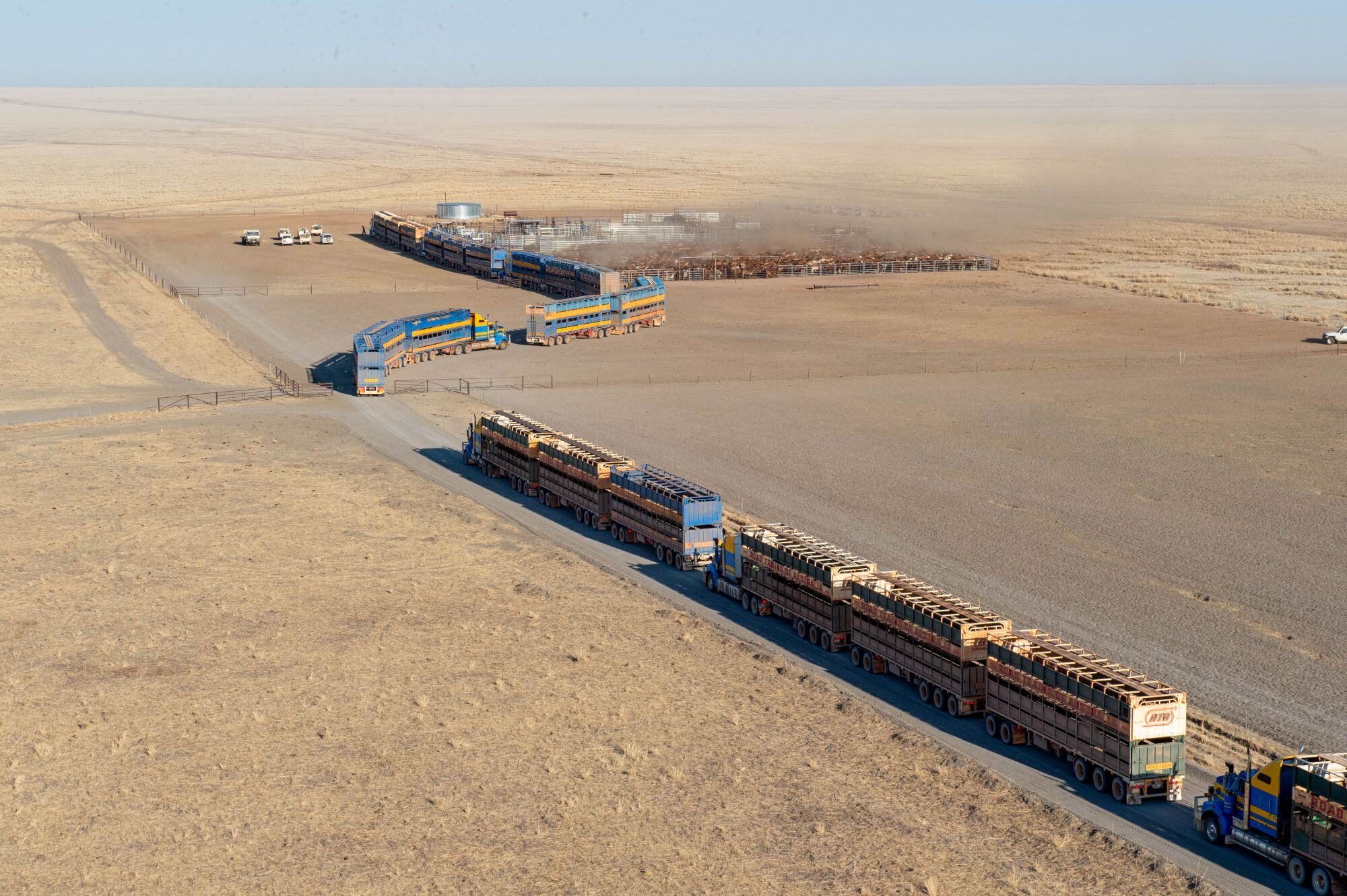The Australian Beef Market in 2025: An Absolute Cracker
In this column in July, the StoneX H2 2025 Australian Cattle & Beef Market Outlook’s bold calls were analysed and assessed for what the final 6...
3 min read
 Alex McLaughlin
:
Jun 20, 2024
Alex McLaughlin
:
Jun 20, 2024

Almost 600% more cattle have been transported from Western Australia to the Eastern States in the first five months of the year, compared to the corresponding period in 2023.
Dry weather and market disruption continues to degrade the WA market, with figures obtained by APlus News from the WA Department of Primary Industries and Regional Development revealing a surge of 595%, or 33,436 head of cattle as opposed to 4,811 head leaving the state up until the end of May last year.
Western price disparity created an attractive proposition for Eastern farmers to purchase out of the western states, with many West Australians offloading stock earlier due to the drier conditions.
A Western Australian agent told APlus News they had noticed feeder cattle often heading towards Southern NSW regions, and slaughter cattle heading into South Australia.

The number of cattle trucked across the WA-SA border last month was up 186% from the following year. However, it has not yet peaked the numbers seen in 2019-2020 season.
The agent believed the peak in numbers was also bolstered by factors such as freight costs and feed supply when drought broke over in the east.
“Freight was also a lot cheaper in 2019-20 than now. You look at the price of diesel back than $1.30-$1.60 now it’s an easy $2.40,” he said.
Historically, the market is expected to slow down this time of year and the agent confirmed this had started to occur.
“Southern cattle have slowed up with most movement out of the state leaving from the Northern regions,” he said.

The WYCI has been in freefall over the past year, sitting 69c/kg below the same day in 2023, However, has lifted 96c/kg over the past month.
The WYCI has gradually met the price point of the Eastern states, recovering from the wounding of the dry season and insecurity around the live export which took its toll on the market.
The greatest disparity between the Western and Eastern markets was seen in February where the WYCI sat at 373c/kg on January 29. On the same day, 649c/kg was seen on the EYCI.
The EYCI rose after widespread November rainfall in the Eastern states and continued summer rains.
The EYCI sits 11c/kg in front of where it was this time last year, however, has seen a 38c/kg decline in the past month and has weakened 14c/kg over the past week.
The Eastern States' has also had an increased appetite for WA sheep so far in 2024, with a 511% increase year on year for sheep crossing the border in the first five months of 2024.
Figures obtained by APlus News from the WA Department of Primary Industries and Regional Development revealed 673,571 sheep were sent east between January and May this year – compared with 120,700 sheep for the same period last year.
Uncertainty around the live sheep trade, combined with a dry season, meant numbers were offloaded “wherever we could sell them”.

The figures from January to May over the past five years, show numbers nearing those of 2020, where total sheep transported from the western states sky-rocketed to s 433,755 head.

DPIRD figures shown the last big surge of sheep from WA to eastern states seen in 2019-20, when the drought-conditions eased and people were looking to restock.
One Riverina farmer APlus News spoke to earlier in the year, said he had trucked six road trains of Merino ewes across the Nullarbor in the past few months.
He was targeting younger ewes, aged one to three years old in good forward condition, straight from the paddock.
It’s a strategy he’s used in the past when the price is right – usually when Eastern States prices are high or the conditions in WA are off.
It was the latter that he believed was driving the push East.
He said the Riverina had been experiencing a pretty good season compared to WA.
“One area I bought from hasn’t had rain since September last year,” he said.
When considering trading stock from WA, the farmer said he calculated $35-40 freight per ewe.
A road train holds eight decks of livestock, which in the case of his young ewes normally equates to 700-800 head depending on their size.
“The sheep we buy have to be in very good order,” he said.
The roughly 3500km journey, depending on their home farm location in WA, includes spelling them for 12 to 18 hours halfway for welfare purposes.
They rest, are fed hay, and are offered an electrolyte drink to ensure hydration.
He said they were also careful about choosing when to bring the sheep over, for example they wouldn’t load during a heat wave.
This farmer said he had heard of a lot of agents bringing sheep out of WA.
.jpg)
In this column in July, the StoneX H2 2025 Australian Cattle & Beef Market Outlook’s bold calls were analysed and assessed for what the final 6...
.png)
Each December we save the last article of the year for a bit of a crystal ball gaze, as we try to bring together market fundamentals and work out...
.png)
Australia’s wool market posted another strong performance this week, with all micron categories attracting solid support across the three selling...